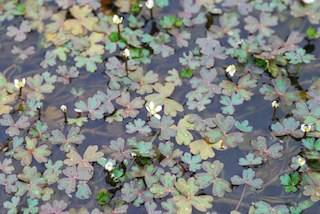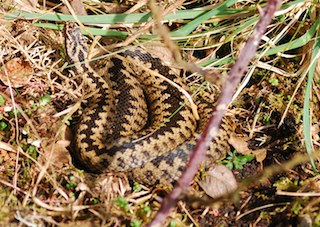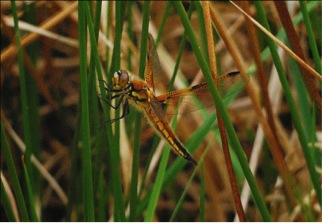Hi all – I am Dougy the volunteer warden (on behalf of the Cornwall Bird Watching and Preservation Society and the Cornwall Wildlife Trust). The reserve is jointly owned by the CBWPS and the CWT. To find the farm, follow the A3083 Helston to Lizard road. 3 kms after the B3296 to Mullion Cove, look out for a sign for ‘Wild Camping’ on the right-hand side. It covers a large area (over 120 hectares) and has a good mix of habitat – heathland, scrub, pasture and plenty of ponds.
Windmill Farm has something for everyone at this time of year. For the botanists amongst you the Three Lobed Crowfoot (picture below) is still in flower – this rare track loving plant can be found in the gateway on the approach to Ruan Pool.
The farm also has other rarities such as Pygmy Rush and Yellow Centruary. The first few weeks of June should welcome the arrival of Green Winged Orchids.
For reptile lovers there are many Adders, Slow Worms and Common Lizards to be found. Many live under the reptile sheets that I have put down over the years. Be careful when lifting the sheets as the Adders will be more scared than you!
As the temperature rises the reserve comes into its own in terms of Dragonflies. Windmill Farm is an excellent site for many species of Dragonfly (18 species have been recorded). I am leading a Dragonfly walk on Sunday the 28th July at 10am. It is free and as long as it is not raining I guarantee you some fantastic Dragon and Damselflies. 4 Spotted Chasers and Large Red Damselflies are already on the wing at the Farm. This picture (of a 4 Spotted Chaser) was taken on the 10th May.
May is a great month for migrant birds at Windmill Farm and most of our visitors have arrived. There are up to 3 Cuckoos around and good numbers of Sedge Warbler, Whitethroat, Blackcap, Willow Warbler and Chiffchaff. There are also a few pairs of Grasshopper Warbler about. A Lesser Whitethroat and a Garden Warbler have also recently been present. Hobby’s hunt over the heath and ponds and there are often visits from Wheatear, Marsh Harrier and Short Eared Owl. The latter two may have moved out by now.
Pictured below are: Wheatear, Sedge Warbler and Grasshopper Warbler.
 |
 |
 |
In addition to all the above there are many other great animals to be encountered including; toads, frogs, common newts, field voles, common and water shrews, mice, stoats, fox, rabbits, the occassional Roe Deer and lots more. So come on down. See you there! Dougy.
Published: May 2013
Author: Doug Wright
Click here for more articles about conservation work on the Lizard.
